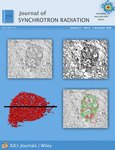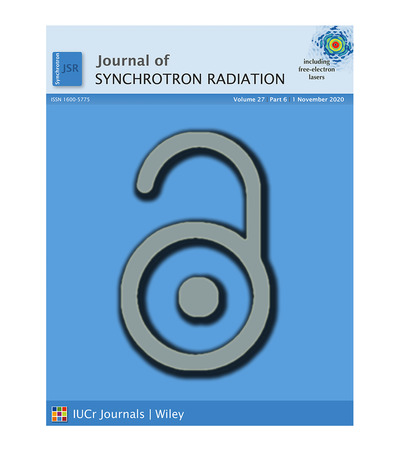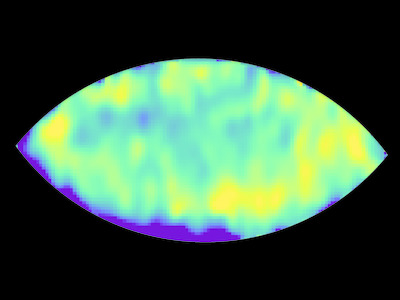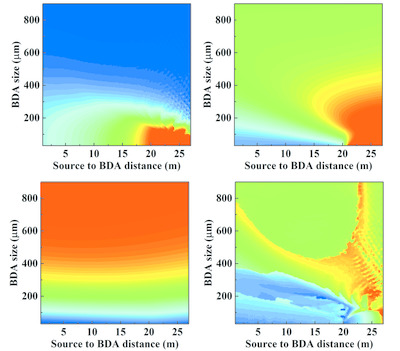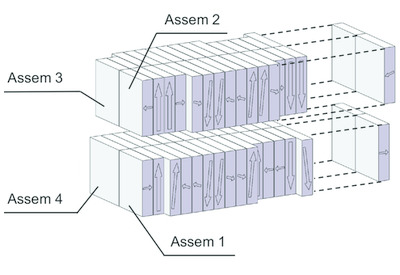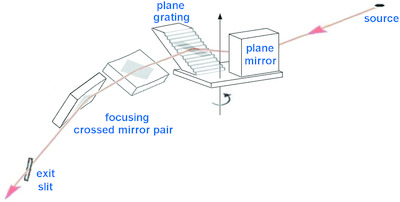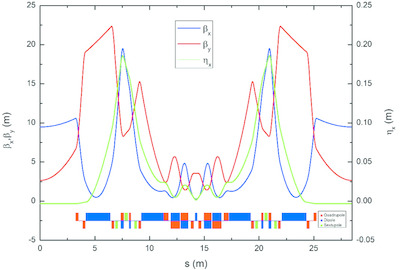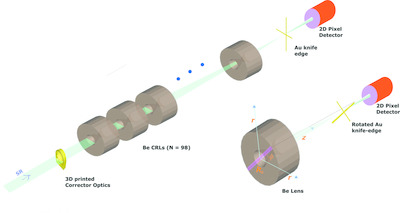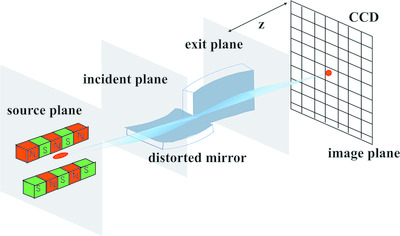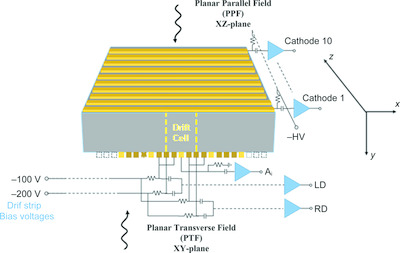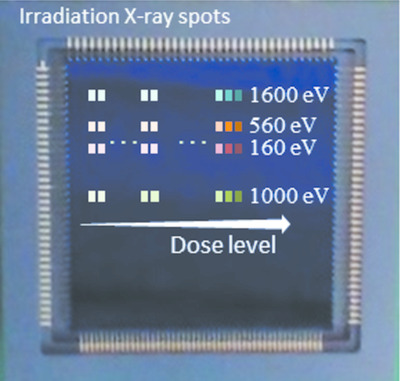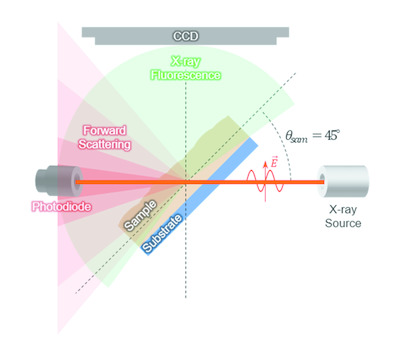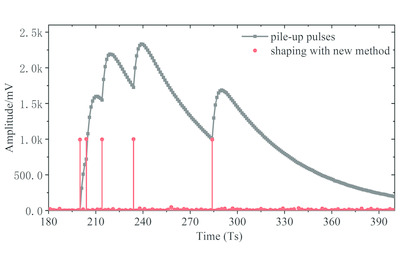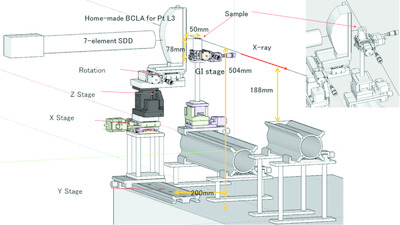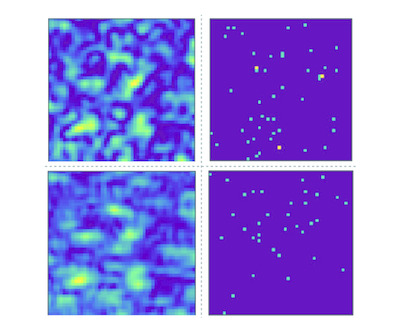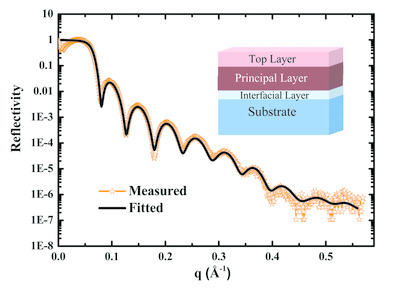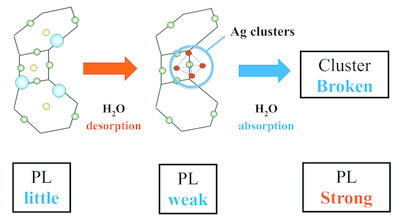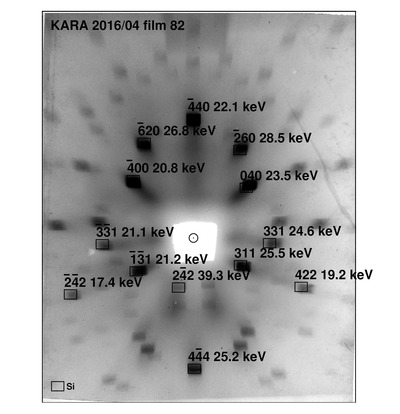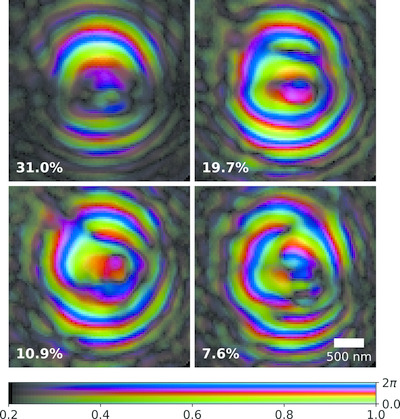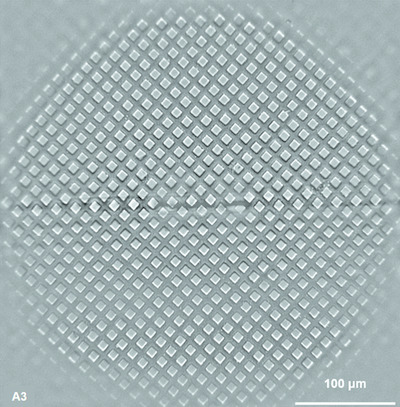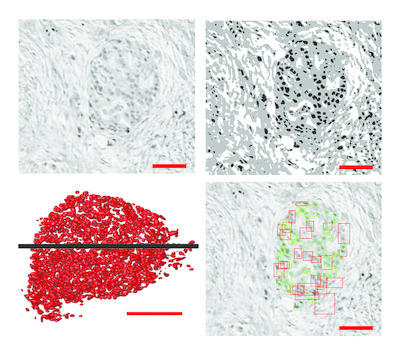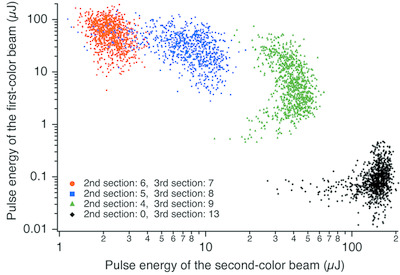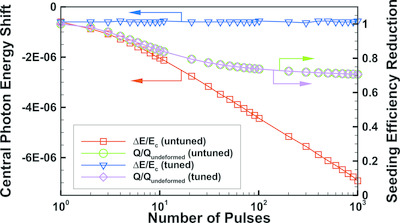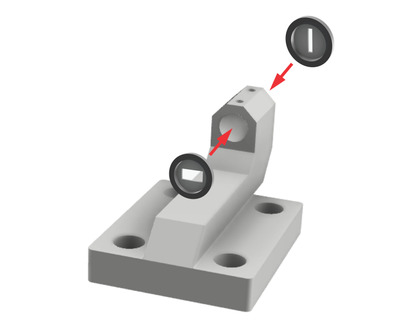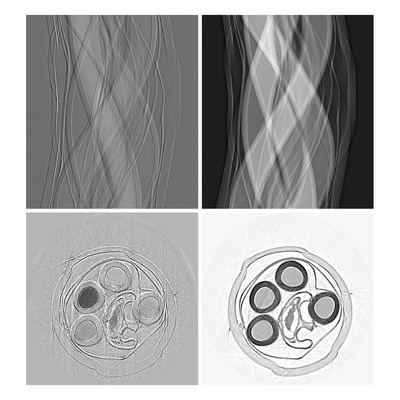Journal list menu
Export Citations
Download PDFs
international union of crystallography
Announcement of two new Main Editors for Journal of Synchrotron Radiation
- Page: 1459
- First Published: 05 November 2020
Announcement of conversion of Journal of Synchrotron Radiation to 100% open access from January 2022
- Page: 1460
- First Published: 05 November 2020
research papers
Ronchi shearing interferometry for wavefronts with circular symmetry
- Pages: 1461-1469
- First Published: 14 September 2020
Speckle correlation as a monitor of X-ray free-electron laser induced crystal lattice deformation
- Pages: 1470-1476
- First Published: 09 October 2020
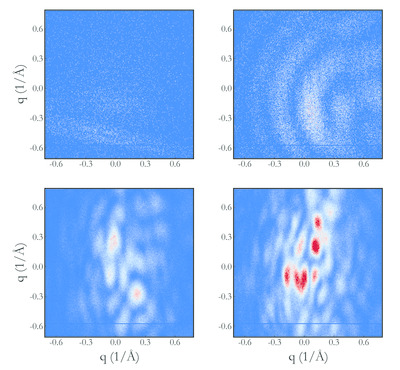
Free-electron laser X-ray beam-induced lattice disorder is investigated by measuring shot-to-shot evolution of near-Bragg coherent diffuse scattering from single-crystal germanium. It is shown that X-ray photon correlation analysis of sequential speckle measurements can be used to monitor the nature and extent of the lattice displacement rearrangement.
Third-order aberration of soft X-ray optical systems with orthogonal and coplanar arrangement of the main planes of elements
- Pages: 1477-1484
- First Published: 14 September 2020
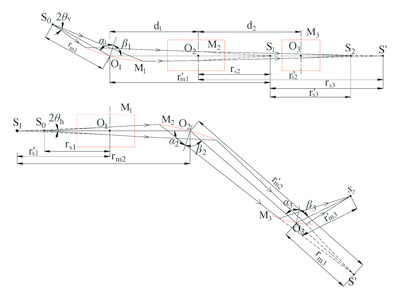
Soft X-ray optical systems are widely used in synchrotron radiation, X-ray microscopes, etc. Here, a third-order aberration analytical analysis method for soft X-ray optical systems with orthogonal and coplanar arrangement of the main planes of elements is proposed. It will provide an analytical measure in design and optimization of this kind of optical system.
Phase analysis for partially coherent light propagating through an optimized aperture in a synchrotron beamline
- Pages: 1485-1493
- First Published: 14 September 2020
Practical design and performance of a new merged APPLE-Knot undulator
- Pages: 1494-1498
- First Published: 09 October 2020
On obtaining high spectral resolution in extreme ultraviolet/soft X-ray monochromators operating off-plane diffraction in a divergent incident beam
- Pages: 1499-1509
- First Published: 14 October 2020
Investigation of the damping wiggler effect and application on the PAL fourth-generation storage ring
- Pages: 1510-1517
- First Published: 22 October 2020
Correction of the X-ray wavefront from compound refractive lenses using 3D printed refractive structures
- Pages: 1518-1527
- First Published: 19 October 2020
Focusing a round coherent beam by spatial filtering the horizontal source
- Pages: 1528-1538
- First Published: 20 October 2020

The use of spatial filtering with a horizontal slit near the source to enlarge the horizontal coherence in an experimental station and produce a diffraction-limited round focus at an insertion device beamline for X-ray photon correlation spectroscopy experiments is illustrated. This scheme has now been in use since 2019 for the 8-ID beamline at the Advanced Photon Source, sharing the undulator beam with two separate beamlines, 8-ID-E and 8-ID-I at 7.35 keV, with increased partially coherent flux, reduced horizontal spot sizes on samples, and good speckle contrast.
Fast convolution-based performance estimation method for diffraction-limited source with imperfect X-ray optics
- Pages: 1539-1552
- First Published: 26 October 2020
Small Bragg-plane slope errors revealed in synthetic diamond crystals
- Pages: 1553-1563
- First Published: 26 October 2020
Recent advances in the development of high-resolution 3D cadmium–zinc–telluride drift strip detectors
- Pages: 1564-1576
- First Published: 25 September 2020
Backside-illuminated scientific CMOS detector for soft X-ray resonant scattering and ptychography
- Pages: 1577-1589
- First Published: 26 October 2020
Nanoparticle dose enhancement of synchrotron radiation in PRESAGE dosimeters
- Pages: 1590-1600
- First Published: 26 October 2020
Absolute intensity calibration for carbon-edge soft X-ray scattering
- Pages: 1601-1608
- First Published: 16 September 2020
Counting-loss correction method based on dual-exponential impulse shaping
- Pages: 1609-1613
- First Published: 25 September 2020
Improving the soft X-ray reflectivity of Cr/Ti multilayers by co-deposition of B4C
- Pages: 1614-1617
- First Published: 09 October 2020
Bent crystal Laue analyser combined with total reflection fluorescence X-ray absorption fine structure (BCLA + TRF-XAFS) and its application to surface studies
- Pages: 1618-1625
- First Published: 16 October 2020
Extracting contrast in an X-ray speckle visibility spectroscopy experiment under imperfect conditions
- Pages: 1626-1632
- First Published: 19 October 2020
Influence of spin orbit splitting and satellite transitions on nickel soft X-ray optical properties near its L2,3 absorption edge region
- Pages: 1633-1639
- First Published: 20 October 2020
Local structure change of luminescent Ag zeolite-A and -X studied by in situ XAFS and IR spectroscopy
- Pages: 1640-1647
- First Published: 21 October 2020
Theoretical spectral analysis of FEL radiation from multi-harmonic undulators
- Pages: 1648-1661
- First Published: 22 October 2020
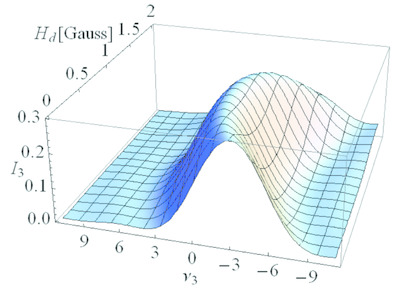
A comparative theoretical analysis of the free-electron laser (FEL) radiation in main FEL experiments is given. It is shown that an elliptic undulator with field harmonics and electron–photon phase-shifting yields significantly higher harmonic power than that from a planar undulator with phase-shifting.
Time and space resolved modelling of the heating induced by synchrotron X-ray nanobeams
- Pages: 1662-1673
- First Published: 16 September 2020
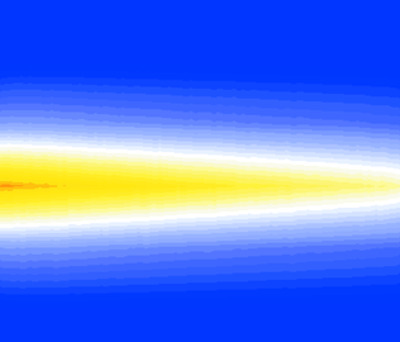
The heating effects of hard X-rays from synchrotron sources are simulated by coupling the Monte Carlo method with the Fourier heat equation. The temperature behaviours simulated are found to be critically dependent on the filling mode of the electron storage ring and on the distribution of the energy density absorbed by the material.
Geometric determination of direction of dislocations using synchrotron X-ray transmission topography
- Pages: 1674-1680
- First Published: 28 September 2020
Mjölnir: a miniature triaxial rock deformation apparatus for 4D synchrotron X-ray microtomography
- Pages: 1681-1687
- First Published: 16 October 2020
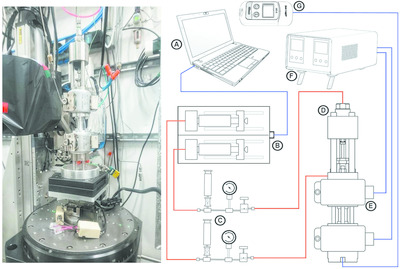
The design, construction and assembly details for an X-ray transparent triaxial deformation cell for 4D investigations of rock deformation and coupled chemical–mechanical processes in the geosciences are presented. The portability and flexibility of the cell are demonstrated by deployment on four different synchrotron beamlines.
Hard X-ray ptychography for optics characterization using a partially coherent synchrotron source
- Pages: 1688-1695
- First Published: 16 October 2020
Zernike phase-contrast full-field transmission X-ray nanotomography for 400 micrometre-sized samples
- Pages: 1696-1702
- First Published: 21 October 2020
A coded aperture microscope for X-ray fluorescence full-field imaging
- Pages: 1703-1706
- First Published: 21 October 2020
3D virtual histology of human pancreatic tissue by multiscale phase-contrast X-ray tomography
- Pages: 1707-1719
- First Published: 26 October 2020
short communications
Two-color X-ray free-electron laser consisting of broadband and narrowband beams
- Pages: 1720-1724
- First Published: 14 October 2020
Dynamic pulse-to-pulse thermal load effects in pulse-train-mode self-seeded X-ray free-electron laser
- Pages: 1725-1729
- First Published: 20 October 2020
Implementation of a crossed-slit system for fast alignment of sealed polycapillary X-ray optics
- Pages: 1730-1733
- First Published: 26 October 2020
computer programs
X-ray Spectral Imaging Program: XSIP
- Pages: 1734-1740
- First Published: 14 September 2020
THORONDOR: a software for fast treatment and analysis of low-energy XAS data
- Pages: 1741-1752
- First Published: 28 September 2020
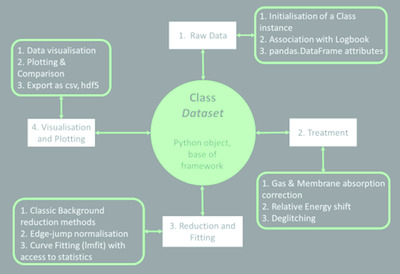
THORONDOR is a Python software realized for the analysis of multiple NEXAFS spectra collected in situ. It allows the correction and normalization of the acquired spectra through a fast and intuitive interface. Moreover, it offers a sophisticated toolbox for the fitting of the NEXAFS rising-edge peaks.




